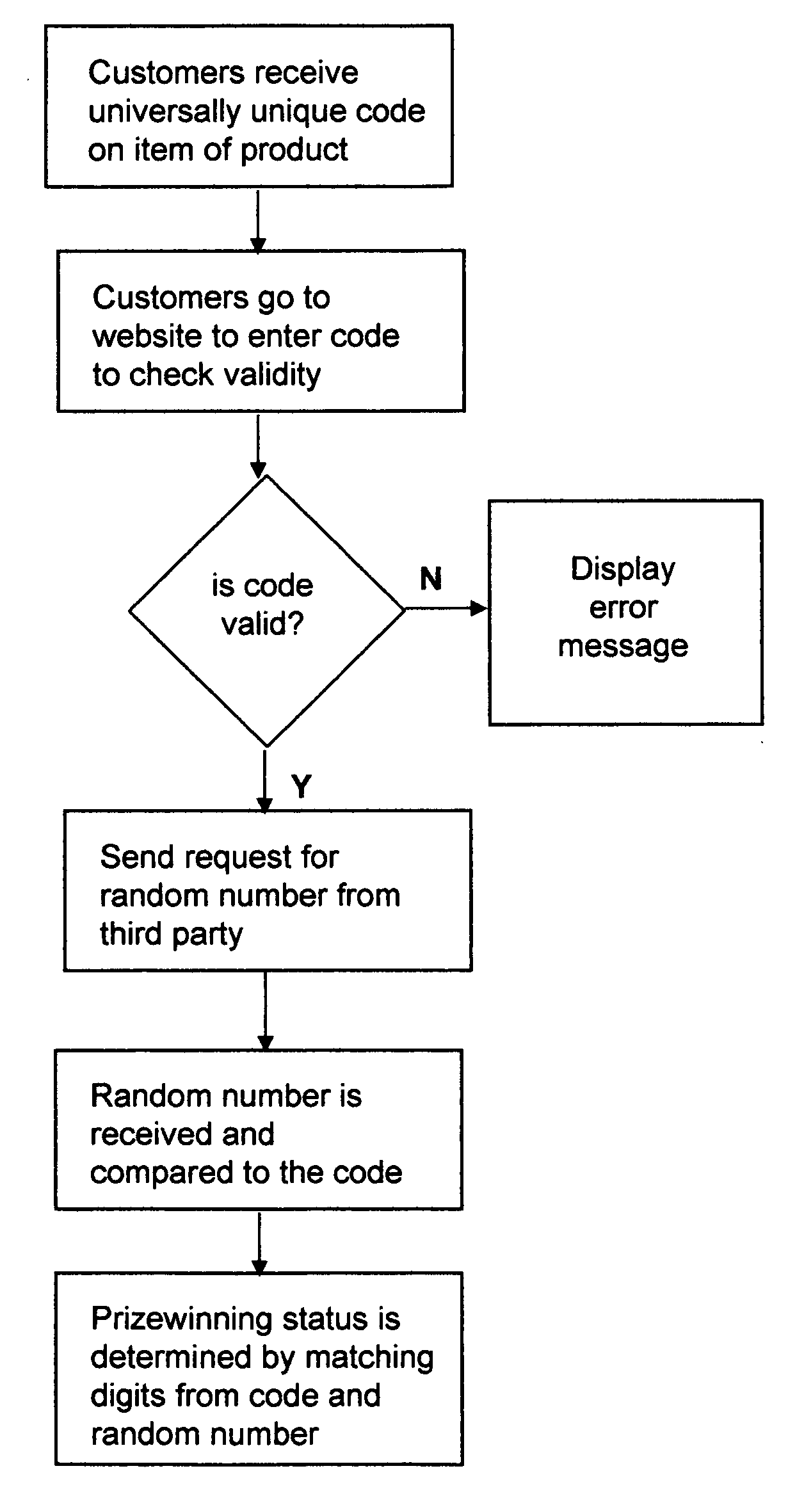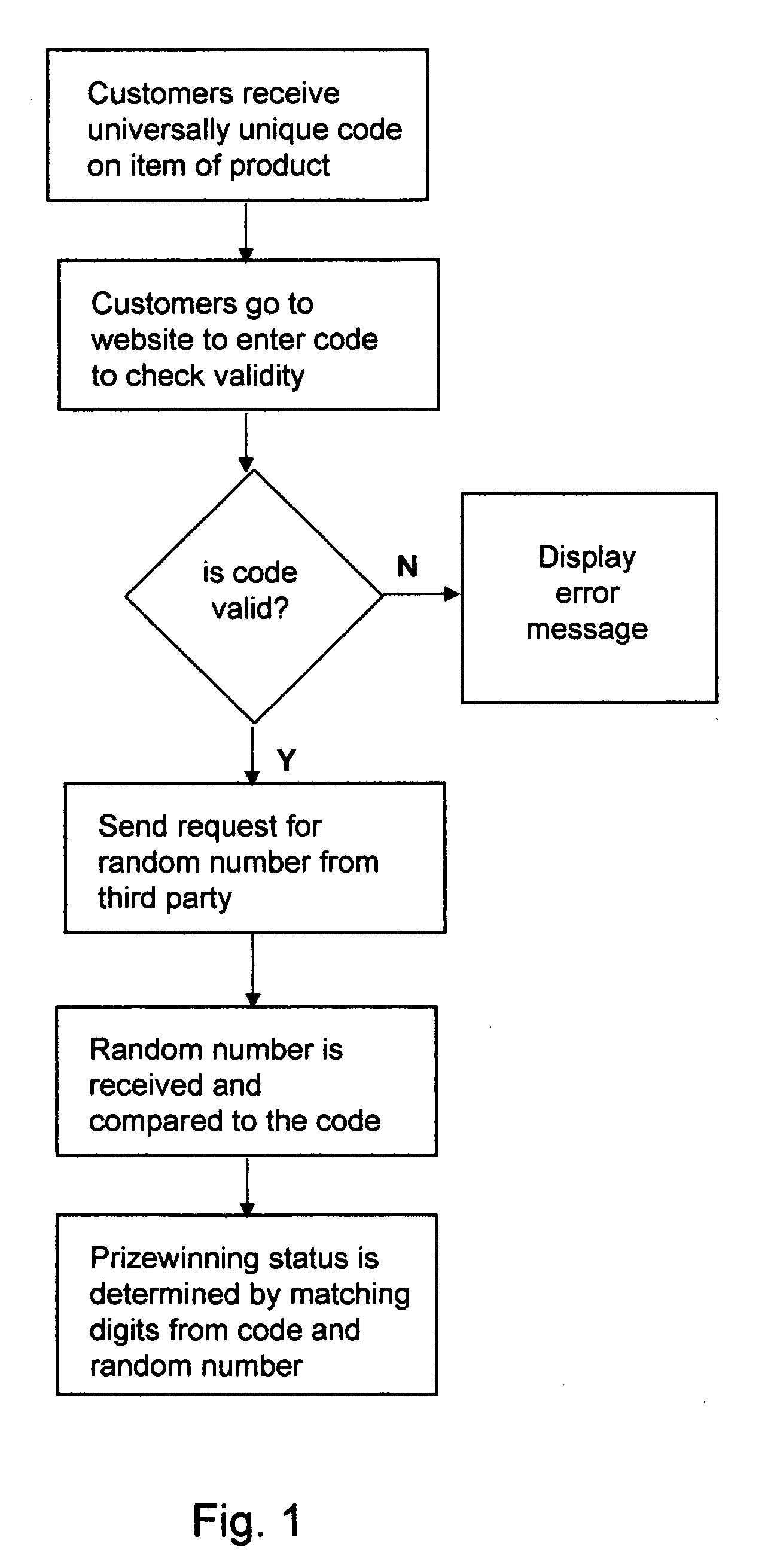Method and system for determining prizewinning status and awarding a prize
a prize and status technology, applied in the field of sweepstakes, can solve the problems of changing the odds of the entire game, forgery, manipulation, and duplicate, and achieve the effect of reducing the odds of the whole game, reducing the probability of fraud, and reducing the risk of fraud
- Summary
- Abstract
- Description
- Claims
- Application Information
AI Technical Summary
Problems solved by technology
Method used
Image
Examples
Embodiment Construction
[0011] A method 10 for determining prizewinning status begins when a code, typically a number or alphanumeric string, is obtained from an item such as a consumer product. The code is entered online by the individual consumer at a website specified in the sweepstakes instructions. Once the code is received it is validated to be a genuine code that was initially applied by the manufacturer of the product to the game piece, product packaging, or the product itself If the code is valid, a request is sent to a third party through a network. The third party which receives such requests replies with a random number or an equivalent representation of said random number, such as an alphanumeric string. If this random number sent in reply matches one or more digits of the code entered by the consumer in accordance with the parameters of the marketing program, a determination is instantly made of prizewinning status. This determination can follow any logic—such as if the reply matches the code...
PUM
 Login to View More
Login to View More Abstract
Description
Claims
Application Information
 Login to View More
Login to View More - R&D
- Intellectual Property
- Life Sciences
- Materials
- Tech Scout
- Unparalleled Data Quality
- Higher Quality Content
- 60% Fewer Hallucinations
Browse by: Latest US Patents, China's latest patents, Technical Efficacy Thesaurus, Application Domain, Technology Topic, Popular Technical Reports.
© 2025 PatSnap. All rights reserved.Legal|Privacy policy|Modern Slavery Act Transparency Statement|Sitemap|About US| Contact US: help@patsnap.com



